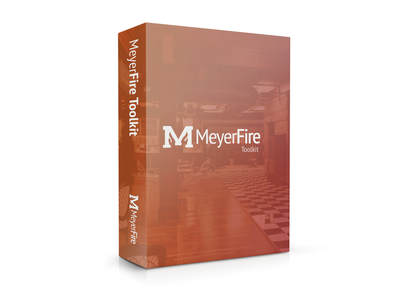|
I have an exhaust system serving a welding and metal fabrication lab at a school. They will utilize 70% ferrous metal and the remaining will be a mixture of stainless steel, coated steel and aluminum.
The largest duct diameter at the building exit is 30" round. The dust collector will be located on the exterior of the building and in a freezing environment. Will I need to provide fire suppression within the ductwork both inside and outside as well as within the dust collector? Sent in anonymously for discussion. Discuss This | Submit Your Question | Subscribe
5 Comments
Mike Ruck
1/29/2021 09:24:36 am
Fire suppression would be located on ductwork inside building.
Reply
Franck
1/29/2021 10:37:48 am
The possible issue is related to pyrophoric metal, such as aluminum, especially when divided in small particulates (dust).
Reply
CJ Bonczyk
1/29/2021 11:34:20 am
I would see if you can get all the cutsheet data and design for the exhaust system & dust collector itself. Many times these have particular standards (NFPA 45, 91, 68, 69, 652 & 654, 484), that are required for the fire protection and safety guidelines. Additionally ensure the materials are not UN Class 4.3 solid as tested using UN Class 4.3 water reactivity test methods. Specific detection i.e. smoke, spark detector, and any heat detectors may be required. Premanufactured nozzle/sprinkler locations may be required on the units/ duct themselves. The detection and system unit design will also help dictate which type of applicable extinguishing agent will be required as well. Make sure the project does not have to comply with FM Global as they have particular data sheet requirements on various dust collection systems. Check the life safety code documents for information regarding the occupancy and additional code requirements. Lastly ensure the local AHJ does not have any additional requirements. We have made the mistake in the of simply complying with code for our submittal and the AHJ required additional protection of the system to assist with their fire fighting operations. An example of this of this is we had to add a preaction system for a single sprinkler for two dust collectors located on the exterior of a building. This was not required by code and the design of the system, however a hydrant was within 50 feet and they did not want to expose the responding team to an exploding dust collection unit.
Reply
Jesse
2/1/2021 07:50:10 am
Great question. You'll need listed detection and protection downstream of the last material entry point for sure, and the comment about pyrophoric metals is very good.
Reply
9/10/2021 01:00:56 pm
If you met NFPA requirements, and designed the internal duct system velocities to keep the particulate in suspension, you will not need any kind of suppression in the duct itself. The concept of applying low speed duct, and applying sprinklers for 'fires' is not only compliant with NFPA.
Reply
Leave a Reply. |
ALL-ACCESSSUBSCRIBESubscribe and learn something new each day:
COMMUNITYTop June '24 Contributors
YOUR POSTPE EXAMGet 100 Days of Free Sample Questions right to you!
FILTERS
All
ARCHIVES
July 2024
PE PREP SERIES |
MeyerFire
- Blog
- Forum
-
THE TOOLKIT
- SUBMIT AN IDEA
- BACKFLOW DATABASE*
- CLEAN AGENT ESTIMATOR*
- CLOUD CEILING CALCULATOR
- DOMESTIC DEMAND*
- FIRE FLOW CALCULATOR*
- FIRE PUMP ANALYZER*
- FIRE PUMP DATABASE*
- FRICTION LOSS CALCULATOR
- HANGER SPACER*
- IBC TRANSLATOR*
- K-FACTOR SELECTOR*
- NFPA 13 EDITION TRANSLATOR ('19 ONLY)
- NFPA 13 EDITION TRANSLATOR ('99-'22)*
- LIQUIDS ANALYZER*
- OBSTRUCTION CALCULATOR
- OBSTRUCTIONS AGAINST WALL*
- PITOT CONVERTER
- PLUMBING FIXTURE COUNTS
- QUICK RESPONSE AREA REDUCTION
- REMOTE AREA ANALYZER*
- SPRINKLER DATABASE*
- SPRINKLER FLOW*
- SYSTEM ESTIMATOR*
- TEST & DRAIN CALCULATOR
- THRUST BLOCK CALCULATOR
- TRAPEZE CALCULATOR
- UNIT CONVERTER
- VOLUME & COMPRESSOR CALCULATOR
- WATER STORAGE*
- WATER SUPPLY (US)
- WATER SUPPLY (METRIC)
- UNIVERSITY
- PE Exam
- LOGIN
- PRICING
- OUR CAUSE

MeyerFire.com is a startup community built to help fire protection professionals shine.
Our goal is to improve fire protection practices worldwide. We promote the industry by creating helpful tools and resources, and by bringing together industry professionals to share their expertise.
MeyerFire, LLC is a NICET Recognized Training Provider and International Code Council Preferred Education Provider.
All text, images, and media Copyright © 2016-2024 MeyerFire, LLC
We respect your privacy and personal data. See our Privacy Policy and Terms of Service. The views, opinions, and information found on this site represent solely the author and do not represent the opinions of any other party, nor does the presented material assume responsibility for its use. Fire protection and life safety systems constitute a critical component for public health and safety and you should consult with a licensed professional for proper design and code adherence.
Discussions are solely for the purpose of peer review and the exchange of ideas. All comments are reviewed. Comments which do not contribute, are not relevant, are spam, or are disrespectful in nature may be removed. Information presented and opinions expressed should not be relied upon as a replacement for consulting services. Some (not all) outbound links on this website, such as Amazon links, are affiliate-based where we receive a small commission for orders placed elsewhere.













 RSS Feed
RSS Feed
